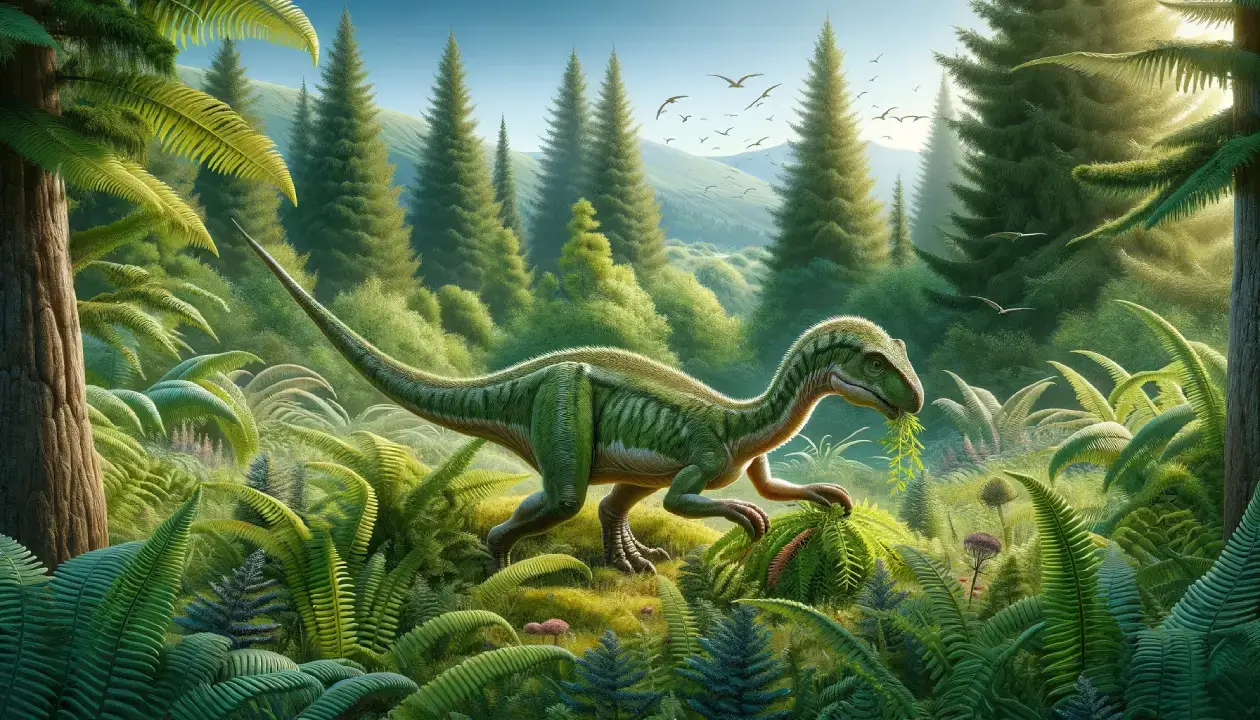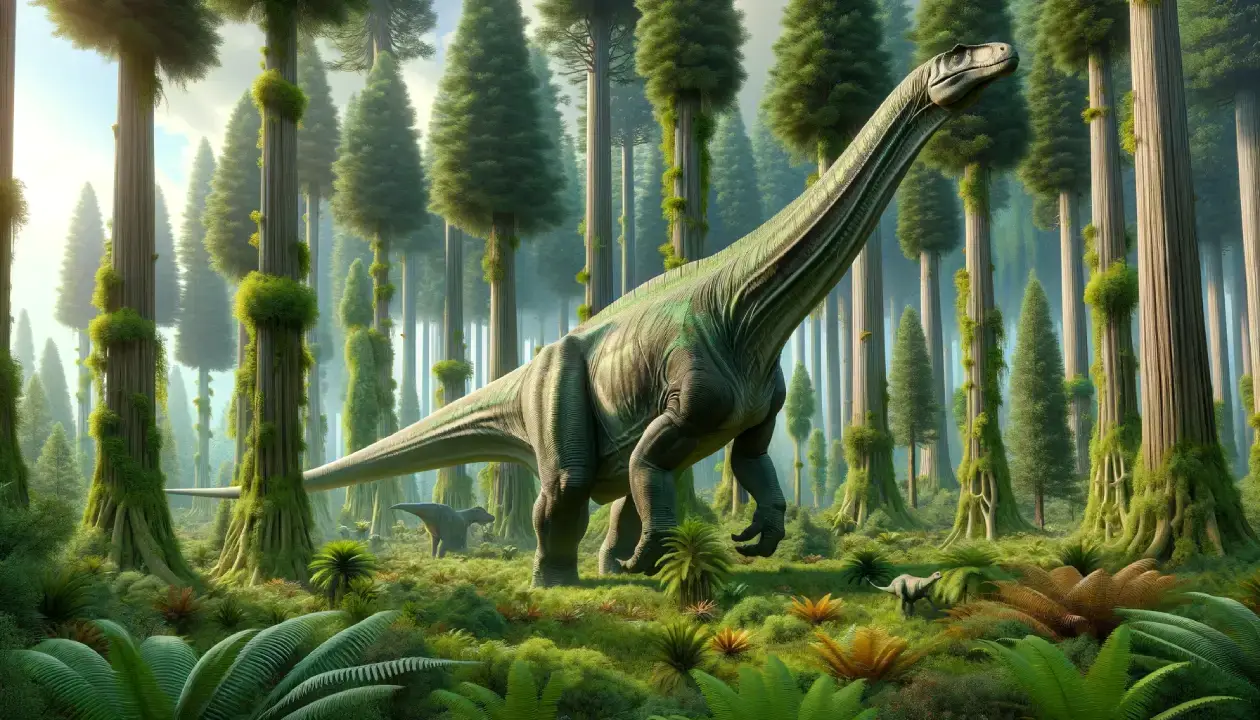Stegosaurus was a herbivorous dinosaur that lived in the Late Jurassic period, about 150 million years ago. It is famous for its distinctive rows of bony plates on its back and its spiked tail, which it used for defense against predators. Stegosaurus was one of the largest and most successful members of the stegosaur family, which included other plated dinosaurs.
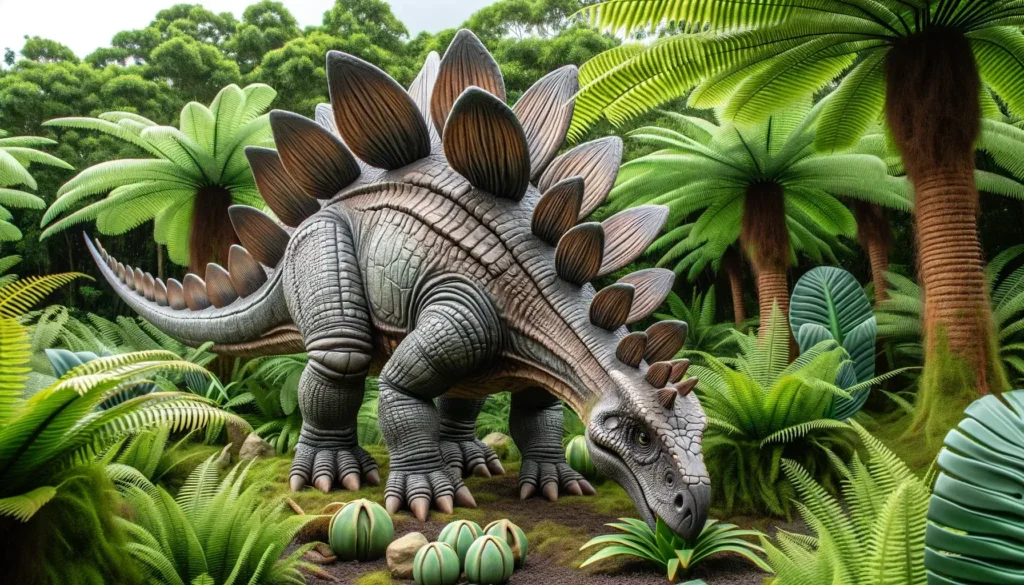
Basic Information
| Feature | Details |
|---|---|
| Time Period | Late Jurassic (159-144 million years ago) |
| Diet | Herbivore |
| Length | Up to 9 meters (29 feet) |
| Weight | Up to 4,000 kilograms (8,800 pounds) |
| Size | Large |
| Posture | Quadrupedal |
| Locations | USA, Portugal, China, Tanzania |
| Continent | North America, Europe, Asia, Africa |
| Type | Stegosaurs |
| Habitats | Forest, Grasslands, Floodplains |
Description of Stegosaurus
Historical Context
Stegosaurus was first discovered in 1877 by Othniel Charles Marsh, an American paleontologist who named it “roof lizard” because he thought its plates lay flat on its back. Later discoveries revealed that the plates were actually upright and alternated along the spine. Stegosaurus fossils have been found in the Morrison Formation of western North America, as well as in Portugal, China and Tanzania. Stegosaurus was one of the most diverse and widespread stegosaurs, with at least five species recognized.
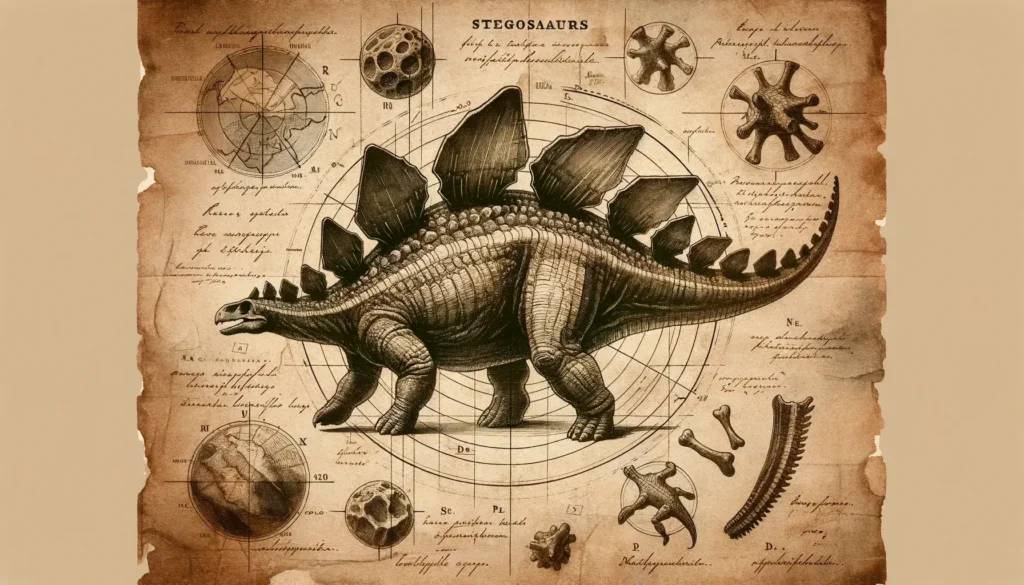
Physical Attributes
Stegosaurus had a small head with a beak-like mouth and peg-like teeth that were adapted for chewing tough plant matter. It had a long neck and a rounded back that supported its plates. The plates varied in size and shape among different species and individuals, but they were generally triangular and flat. The plates were made of bone covered by keratin, the same material that makes up human nails and hair. The plates were probably used for thermoregulation (controlling body temperature), display (attracting mates or intimidating rivals) or both. Stegosaurus also had four spikes on its tail, known as a thagomizer, which it could swing at attackers. The spikes were up to 60 centimeters (2 feet) long and could inflict serious wounds.
Feeding Habits
Stegosaurus was a herbivore that fed on low-growing plants such as ferns, cycads and horsetails. It had a large gut that could digest tough plant fibers. Stegosaurus may have swallowed stones (gastroliths) to help grind up the food in its stomach. Stegosaurus was not very selective about what it ate, and may have consumed some insects or small animals by accident.
Unique Features
Stegosaurus had one of the smallest brains relative to its body size of any dinosaur. Its brain was only about the size of a walnut, which is much smaller than that of a modern dog or cat. This means that Stegosaurus was not very intelligent or agile, and relied more on its senses and instincts to survive. Some scientists have suggested that Stegosaurus had a second brain in its hip region, but this is not true. The cavity in its pelvis was probably filled with a gland or a mass of tissue that helped with metabolism or balance.
Movement and Speed
Stegosaurus was a slow-moving dinosaur that walked on four legs. Its front legs were shorter than its hind legs, which gave it an arched posture. Its feet had hoof-like claws that helped it grip the ground. Stegosaurus could not run very fast, but it could probably reach speeds of up to 10 kilometers per hour (6 miles per hour). Stegosaurus was not very agile or flexible, and had difficulty turning or changing direction quickly.
Cultural Impact
Stegosaurus is one of the most popular and recognizable dinosaurs in the world. It has appeared in many books, movies, TV shows, games and toys. It is often depicted as a friendly or gentle creature, despite its formidable spikes. Stegosaurus is also a symbol of Colorado, where many fossils have been found. It is the state fossil of Colorado and the mascot of the Denver Museum of Nature and Science.
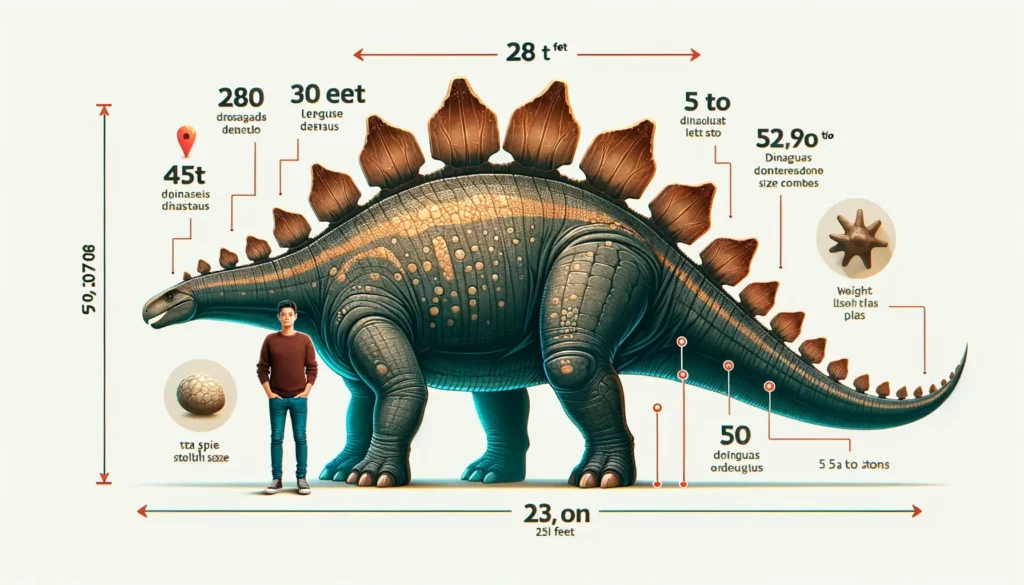
Interesting Facts
- Stegosaurus means “roof lizard” in Greek.
- The word “thagomizer” for the spiked tail of Stegosaurus was coined by a cartoonist named Gary Larson.
- Stegosaurus lived alongside other famous dinosaurs such as Allosaurus, Apatosaurus and Brachiosaurus.
Related Dinosaurs
- Kentrosaurus: A smaller cousin of Stegosaurus with more spikes on its back and tail.
- Huayangosaurus: An early ancestor of Stegosaurus that lived in China and had smaller plates and a longer snout.
- Ankylosaurus: A distant relative of Stegosaurus that had a club-like tail and armor on its body.






